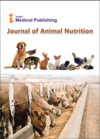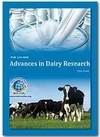Theme: Leading Innovation in Veterinary & Livestock
Livestock 2017
Livestock Nutrition Conference welcomes attendees, presenters and exhibitors from all over the world to attend and register for the “3rd International Conference on Livestock & Nutrition (Livestock 2017)” focusing on the theme “Leading Innovation in Livestock for Sustainable Farming” which is going to be held during November 02-04, 2017 Bangkok, Thailand.
ConferenceSeries Ltd organizes 1000+ Global Events inclusive of 300+ Conferences, 500+ Workshops and 200+ Symposiums on various topics of Science & Technology across the globe with support from 1000 more scientific societies and Publishes 700+ Open Access journals which contains over 50000 eminent personalities, reputed scientists as editorial board members.
The livestock sector in Thailand is expected to recover from cyclical downturn in 2015 on the back of growing demand from both domestic and export markets, and manageable feed costs. The competition in the poultry industry has intensified as Saha Farm returned to the market. In addition, major broiler producers expanded capacity to serve growing demand. In 2015, broiler meat production was 1.80 million tonnes, 8.35% higher than the previous year. Production is expected to increase by 4.80% in 2016. Livestock producers in Thailand are enjoying lower costs of animal feed. The major ingredients of animal feed in Thailand are corn and soybean meal. Corn prices in 2015 increased gradually owing to decreases in harvested area and production. Despite a drop in corn production, corn prices in 2016 are forecast to remain the same because many feed processors substitute other ingredients. The soybean meal utilized in the feed industry is mostly imported.
Livestock conference contributes directly to the livelihoods and food security of almost a billion people and affects the diet and health of many more. Livestock sector on animal feed manufacturer’s workshops directly influences agricultural sector and therefore it targets a wide range of audience such as Livestock Feed manufacturing industries, R&D scientists in the field of Livestock Science, Veterinarians and Animal Health experts. Livestock is needed for many reasons which include analyses of the social and economic aspects of the livestock sector; the environmental impacts of livestock such as the production and management of waste, greenhouse gas emissions and livestock-related land-use change; and large-scale public health and epidemiological investigations.
We look forward to see you in the magnificent city of Bangkok, Thailand.
For more information, please visit Livestock Nutrition Conference.
Track 1: Livestock and Health
In Livestock and Health affairs, the nutritional needs of farm animals are well understood and may be satisfied through natural forage and fodder alone, or enlarged by direct supplementation of nutrients in concentrated, controlled form. The nutritional quality of Animal feed is determined not only by the nutrient content, but also by many other facts such as feed presentation, hygiene, digestibility, and effect on intestinal health. Conference on Feed additives bestow a mechanism through which these nutrient deficiencies can be resolved effect the rate of growth of such animals and also their healthiness and well-being. Even with all the benefits of higher quality feed, most of a farm animal's diet still contains grain-based ingredients because of the higher costs of quality feed.
Related: Livestock Conferences in Asia | Livestock Conferences in Bangkok| Livestock and Nutrition conferences| Livestock Nutrition Conferences |ConferenceSeries Ltd
Conferences related to Livestock and Health
19th International Conference on Animal Nutrition, January 30 - 31, 2017, UAE; 19th International Conference on Livestock Farming and Animal Nutrition, October 23 - 24, 2017, United Kingdom; FIAAP Animal Nutrition Conference, 13-June 2017, Germany; Pacific Northwest Animal Nutrition Conference January 18–19, 2017, Washington; California Animal Nutrition Conference (CANC), May 10–11, 2017, California; 1st International Livestock Nutrition, Health and Production, and Meat Industry Expo, 24 - 26 May 2017, Philippines; 7th International Veterinary Congress, September 04-06, 2017, France; 8th Animal Health & Veterinary Medicine Congress, October 2-4, 2017, Canada; Veterinary Surgeons and Veterinary Medicine Congress 2017, October 02-04, 2017, USA.
Societies related to Livestock and Health
Australian Cattle Breeders Associations, Australia; Australian Wagyu Association, Australia; Australian Egg Corporation Limited, Australia; Australian Chicken Meat Federation, Australia; Vegan Outreach, USA; Society ofAnimal Welfare Administrators, USA; Indraloka Animal Sanctuary, USA; American Rose Society, USA; Old IrishGoat Society, Ireland; Charleston Animal Society, USA; Egyptian Society for Mercy to Animals, Egypt; South African Society for Animal Science, South Africa.
Track 2: Livestock Disease Management and Traceability
Livestock management programs require strong business sense and a firm understanding of how farms and ranches operate. If we enjoy working with animals and leading people, you might find a rewarding career in this field. Livestock managers are responsible for booming the business of poultry farms, dairy farms, cattle ranches or other livestock-related agribusinesses conferences.
Animal disease traceability, or knowing where diseased and at-risk animals are, where as they have been, and when, is very important to ensuring a quick response when animal disease events take place. Animal disease traceability does not avert disease; yet, an efficient and error free traceability system helps reduce the number of animals involved in a disease appraisal and reduces the time needed to respond. Reducing the number of animal owners impacted by an animal disease phenomenon reduces the economic strain on owners and affected communities.
Related: Livestock Conferences in Asia | Livestock Conferences in Bangkok| Livestock and Nutrition conferences| Livestock Nutrition Conferences |ConferenceSeries Ltd
Conferences related to Livestock Disease Management and Traceability
19th International Conference on Animal Nutrition, January 30 - 31, 2017, UAE; 19th International Conference on Livestock Farming and Animal Nutrition, October 23 - 24, 2017, United Kingdom; FIAAP Animal Nutrition Conference, 13-June 2017, Germany; Pacific Northwest Animal Nutrition Conference January 18–19, 2017, Washington; California Animal Nutrition Conference (CANC), May 10–11, 2017, California; 1st International Livestock Nutrition, Health and Production, and Meat Industry Expo, 24 - 26 May 2017, Philippines; 7th International Veterinary Congress, September 04-06, 2017, France; 8th Animal Health & Veterinary Medicine Congress, October 2-4, 2017, Canada; Veterinary Surgeons and Veterinary Medicine Congress 2017, October 02-04, 2017, USA.
Societies related to Livestock Disease and Management and traceability
Egyptian Society for Mercy to Animals, Egypt; South African Society for Animal Science, South Africa; American Rose Society, USA; Old Irish Goat Society, Ireland; Charleston Animal Society, USA; Meat and LivestockAustralia, Australia; Cattle Council of Australia, Australia; Murray Grey Society, Australia; Feed Ingredients and Additives Association of Australia, Australia; Australian Pig Breeders Society, Australia.
Track 3: Recent Technology in Optimising Livestock Production
Precision livestock farming is a tool that imparts continuous automated real-time data to help monitor and manage livestock production and ameliorate individual animal or overall performance. Many years of innovation and early adoption of new technologies has enhanced their success. The pace of change and range of opportunities are unlikely to diminish in the future and we surmise it is vital for all farmers to keep in touch with innovations and understand how they can be applied to their farming businesses to improve their management and physical and financial performance.
Related: Livestock Conferences in Asia | Livestock Conferences in Bangkok | Livestock and Nutrition conferences | Livestock Nutrition Conferences | ConferenceSeries Ltd
Conferences related to Recent Technology in Optimising Livestock Production
19th International Conference on Animal Nutrition, January 30 - 31, 2017, UAE; 19th International Conference on Livestock Farming and Animal Nutrition, October 23 - 24, 2017, United Kingdom; FIAAP Animal Nutrition Conference, 13-June 2017, Germany; Pacific Northwest Animal Nutrition Conference January 18–19, 2017, Washington; California Animal Nutrition Conference (CANC), May 10–11, 2017, California; 1st International Livestock Nutrition, Health and Production, and Meat Industry Expo, 24 - 26 May 2017, Philippines; 7th International Veterinary Congress, September 04-06, 2017, France; 8th Animal Health & Veterinary Medicine Congress, October 2-4, 2017, Canada; Veterinary Surgeons and Veterinary Medicine Congress 2017, October 02-04, 2017, USA.
Societies related to Recent Technology in Optimising Livestock Production
Animal Nutrition Society of India, India; Egyptian Society for Mercy to Animals, Egypt; South African Society forAnimal Science, South Africa; Meat and Livestock Australia, Australia; Feed Ingredients and Additives Association of Australia, Australia; The US Poultry Egg Association, USA; Australian Egg Corporation Limited, Australia; Australian Chicken Meat Federation, Australia; Society of Animal Welfare Administrators, USA; Vegan Outreach, USA; Pig Breed Associations, Australia.
Track 4: Livestock Nutrition
The livestock industry governs production for optimal yields to ensure economic viability and to supply sufficient volumes to feed huge populations. Organic farmers need to understand the nutritional needs of the livestock in order to yield palatable and nutritious organic animal products. The animal’s behaviour, growth pattern, reproductive capacity and food production are closely acquainted linked to the feed it consumes. The nutritional value of the feed and the feed ingredient’s must be delicately balanced. The results of good organic management and good organic feed include the appreciable taste, colour, texture, nutritional value and optimal yield of the food product. Animals, including humans, have a hierarchy of needs. The prime uses of nutrients derived from food are for general maintenance and reproduction. This channels the animal’s nutrients to survive, proceed and perform basic bodily functions. If there is additional vitality and protein available, the animal may be able to consign resources to growth and good body condition. If animals appearing healthy but are not producing enough eggs, milk or meat for you, you may have a problem with a lack of energy and protein in the feed.
Related: Livestock Conferences in Asia | Livestock Conferences in Bangkok| Livestock and Nutrition conferences| Livestock Nutrition Conferences |ConferenceSeries Ltd
Conferences related to Livestock Nutrition
19th International Conference on Animal Nutrition, January 30 - 31, 2017, UAE; 19th International Conference on Livestock Farming and Animal Nutrition, October 23 - 24, 2017, United Kingdom; FIAAP Animal Nutrition Conference, 13-June 2017, Germany; Pacific Northwest Animal Nutrition Conference January 18–19, 2017, Washington; California Animal Nutrition Conference (CANC), May 10–11, 2017, California; 1st International Livestock Nutrition, Health and Production, and Meat Industry Expo, 24 - 26 May 2017, Philippines; 7th International Veterinary Congress, September 04-06, 2017, France; 8th Animal Health & Veterinary Medicine Congress, October 2-4, 2017, Canada; Veterinary Surgeons and Veterinary Medicine Congress 2017, October 02-04, 2017, USA.
Societies related to Livestock Nutrition
The Humane Society of the United States, USA; Pig Breed Associations, Australia; Animal Equality, UK, Albert Schweitzer Foundation, Germany; Vegan Outreach, USA, Society of Animal Welfare Administrators, USA;Indraloka Animal Sanctuary, USA; The US Poultry Egg Association, USA; Iowa Cattlemen's Association, USA;Animal Nutrition Society of India, India; Meat and Livestock Australia, Australia.
Track 5: Poultry
Event on Poultry farming is a lucrative and popular business throughout the world. But it can be a risky business suddenly, especially if we are not concerned about poultry feed management. Success in the poultry farming business majority depends on feeding quality and feed formulation system. For proper growth, egg production and good health, poultry birds require energy. In order to acquire desired growth rate, you must have to purchase and provide highly nutritious poultry feed. Excluding adequate and quality feeding, we can’t run your business properly. As a poultry farmer, we should always produce and sale fresh and healthy birds and quality eggs. For producing quality eggs and meat you have to feed birds quality feed. This will also enhance to get maximum returns from your poultry farming business. Here we are discussing more about poultry feed events and different types of necessary ingredients in the feed.
Related: Livestock Conferences in Asia | Livestock Conferences in Bangkok| Livestock and Nutrition conferences| Livestock Nutrition Conferences |ConferenceSeries Ltd
Conferences related to Poultry
19th International Conference on Animal Nutrition, January 30 - 31, 2017, UAE; 19th International Conference on Livestock Farming and Animal Nutrition, October 23 - 24, 2017, United Kingdom; FIAAP Animal Nutrition Conference, 13-June 2017, Germany; Pacific Northwest Animal Nutrition Conference January 18–19, 2017, Washington; California Animal Nutrition Conference (CANC), May 10–11, 2017, California; 1st International Livestock Nutrition, Health and Production, and Meat Industry Expo, 24 - 26 May 2017, Philippines; 7th International Veterinary Congress, September 04-06, 2017, France; 8th Animal Health & Veterinary Medicine Congress, October 2-4, 2017, Canada; Veterinary Surgeons and Veterinary Medicine Congress 2017, October 02-04, 2017, USA.
Societies related to Poultry
Animal Nutrition Society of India, India; Egyptian Society for Mercy to Animals, Egypt; South African Society forAnimal Science, South Africa; Meat and Livestock Australia, Australia; Feed Ingredients and Additives Association of Australia, Australia; The US Poultry Egg Association, USA; Australian Egg Corporation Limited, Australia; Australian Chicken Meat Federation, Australia; Society of Animal Welfare Administrators, USA; Vegan Outreach, USA.
Track 6: Cattle
Cattle informal cow are the most common type of large domesticated ungulates. They are a prominent present member of the subfamily Bovinae, are the popular widespread species of the genus Bos, and are most commonly classified together as Bos taurus. Cattle are grown as livestock for meat (beef and veal), as dairy animals for milk and different dairy products, and draft animals like (oxen or bullocks that pull carts, plows and other implements). Other products involve leather and dung for manure or fuel. In some regions of India, cattle have significant religious meaning. Nearly eighty progenitors domesticated in southeast countries about 10,500 years ago, according to an estimate from 2003, there are 1.3 billion cattle over the world. In 2009, cattle became one of the first livestock animal’s events to have a completely mapped genome. Some conclude that cattle is the oldest form of wealth, and cattle raiding consequently one of the earliest forms of theft.
Related: Livestock Conferences in Asia | Livestock Conferences in Bangkok| Livestock and Nutrition conferences| Livestock Nutrition Conferences |ConferenceSeries Ltd
Conferences related to Cattle
19th International Conference on Animal Nutrition, January 30 - 31, 2017, UAE; 19th International Conference on Livestock Farming and Animal Nutrition, October 23 - 24, 2017, United Kingdom; FIAAP Animal Nutrition Conference, 13-June 2017, Germany; Pacific Northwest Animal Nutrition Conference January 18–19, 2017, Washington; California Animal Nutrition Conference (CANC), May 10–11, 2017, California; 1st International Livestock Nutrition, Health and Production, and Meat Industry Expo, 24 - 26 May 2017, Philippines; 7th International Veterinary Congress, September 04-06, 2017, France; 8th Animal Health & Veterinary Medicine Congress, October 2-4, 2017, Canada; Veterinary Surgeons and Veterinary Medicine Congress 2017, October 02-04, 2017, USA
Societies related to Cattle
The Humane Society of the United States, USA; Pig Breed Associations, Australia; Animal Equality, UK; Albert Schweitzer Foundation, Germany; Vegan Outreach, USA; Society of Animal Welfare Administrators, USA;Indraloka Animal Sanctuary, USA; The US Poultry Egg Association, USA; Iowa Cattlemen's Association, USA;Animal Nutrition Society of India, India; Egyptian Society for Mercy to Animals, Egypt; South African Society for Animal Science, South Africa.
Track 7: Sheep
Nutrition plays a vital role in the overall productivity, health, and well-being of the sheep flock. Because feed price account for around two-thirds of the total cost of production on most Virginia sheep farms, it is important that manufacturer consider nutrition management a top priority. Nutrient requirements meeting of sheep vary with differences in age, body weight, and stage of growth. The five major categories of nutrients required by sheep are: water, energy, protein, vitamins and minerals. During the grazing period, sheep are able to meet their nutrient requirements from pasture a salt and mineral supplement. Hay is given to the flock when forages are limited, and grain may be added to the diet at particular stages of production when additional nutrient supplementation is required. Small grain pastures or stockpiled fescue grass can supply up to one-half of the feed requirements of the ewe flock during the winter. For winter-born lambs, creep diets and the diets for early-weaned lambs are formulated from high energy feed grains and protein supplements to promote accelerated production. Grazing season, pastures of mixed grass and clover, alfalfa, small grain, and turnip plays as excellent role of nutrition for growing lambs. A source of clean, fresh water is provided to sheep at all times.
Related: Livestock Conferences in Asia | Livestock Conferences in Bangkok| Livestock and Nutrition conferences| Livestock Nutrition Conferences |ConferenceSeries Ltd
Conferences related to Sheep
19th International Conference on Animal Nutrition, January 30 - 31, 2017, UAE; 19th International Conference on Livestock Farming and Animal Nutrition, October 23 - 24, 2017, United Kingdom; FIAAP Animal Nutrition Conference, 13-June 2017, Germany; Pacific Northwest Animal Nutrition Conference January 18–19, 2017, Washington; California Animal Nutrition Conference (CANC), May 10–11, 2017, California; 1st International Livestock Nutrition, Health and Production, and Meat Industry Expo, 24 - 26 May 2017, Philippines; 7th International Veterinary Congress, September 04-06, 2017, France; 8th Animal Health & Veterinary Medicine Congress, October 2-4, 2017, Canada; Veterinary Surgeons and Veterinary Medicine Congress 2017, October 02-04, 2017, USA.
Societies related to Sheep
The Humane Society of the United States, USA; Pig Breed Associations, Australia; Animal Equality, UK, Albert Schweitzer Foundation, Germany; Vegan Outreach, USA; Society of Animal Welfare Administrators, USA;Indraloka Animal Sanctuary, USA; The US Poultry Egg Association, USA; Iowa Cattlemen's Association, USA;Animal Nutrition Society of India, India; Egyptian Society for Mercy to Animals, Egypt; South African Society for Animal Science, South Africa.
Track 8: Livestock Feed Ingredients
Livestock Feed percentage of agricultural gross production is used for animal nutrition purposes. These products has been used directly, i.e. grasses, silages and grains, other feedstuffs of animal or plant origin do not reach feedstuff status until multiple steps of processing (to provide human food) have been carried out. These products are commonly known as by-products, i.e. soy bean meal, rice bran, fish meal and dried distiller’s grain. Finally manufactured feedstuffs exist, these feedstuffs majorly involve feed additives (i.e. amino acids, enzymes, minerals, vitamins) that help enhance the standard of diet compositions based on primary products (direct use) and by-products. Meeting on feed ingredient is a major component or constituent or any combination/mixture added to and comprising the feed. Feed includes might include grains, milling by products, added vitamins, minerals, fats/oils, and other nutritional and energy sources. Animal feed provide a practical outlet for plant and animal by-products not suitable for human consumption.
Related: Livestock Conferences in Asia | Livestock Conferences in Bangkok| Livestock and Nutrition conferences| Livestock Nutrition Conferences |ConferenceSeries Ltd
Conferences related to Livestock Feed Ingredients
19th International Conference on Animal Nutrition, January 30 - 31, 2017, UAE; 19th International Conference on Livestock Farming and Animal Nutrition, October 23 - 24, 2017, United Kingdom; FIAAP Animal Nutrition Conference, 13-June 2017, Germany; Pacific Northwest Animal Nutrition Conference January 18–19, 2017, Washington; California Animal Nutrition Conference (CANC), May 10–11, 2017, California; 1st International Livestock Nutrition, Health and Production, and Meat Industry Expo, 24 - 26 May 2017, Philippines; 7th International Veterinary Congress, September 04-06, 2017, France; 8th Animal Health & Veterinary Medicine Congress, October 2-4, 2017, Canada; Veterinary Surgeons and Veterinary Medicine Congress 2017, October 02-04, 2017, USA.
Societies related to Livestock Feed Ingredients
Animal Nutrition Society of India, India; Egyptian Society for Mercy to Animals, Egypt; South African Society forAnimal Science, South Africa; Meat and Livestock Australia, Australia; Feed Ingredients and Additives Association of Australia, Australia; The US Poultry Egg Association, USA; Australian Egg Corporation Limited, Australia; Australian Chicken Meat Federation, Australia; Society of Animal Welfare Administrators, USA; Vegan Outreach, USA; Australian Wagyu Association, Australia; Australian Egg Corporation Limited, Australia; Australian Chicken Meat Federation, Australia.
Track 9: Feed Prices and Agribusiness
Analysing the impact of increasing rapidly feed costs on animal agriculture events, it’s important to consider the causes of these rising prices as well as overall solutions to the problems resulting from higher feed costs. A variety of issues have contributed to higher feed grain prices. However, unlike most other periods of rising grain prices, recent price have been increased driven primarily by strong demand, not supply shocks. In particular, rapid growth of ethanol production in the United States has been a major factor. Feed additives market continues to be a lucrative market for companies dealt with feed additive products. The market players are responding to the emerging opportunities by spreading their global presence and product lines. The market for feed additives, on the basis of types it has been classified into antioxidants, amino acids, enzymes, vitamins, minerals, antibiotics, acidifiers, binders, and others. The classification is based on livestock are poultry, swine, cattle, aquatic animals, and others. The market, by region, is segmented into North America, Europe, Asia-Pacific, and Rest of the World (RoW). The feed additives market function is expected to reach USD 18.0 Billion by 2015 at a CAGR of 3.9% by 2020. Feed additives meetings help in improving animal health and increase productivity by assuring enriched nutrients along with the feedstuff, which accelerates growth & weight gain, develops immunity against diseases, and improve overall performance of the livestock.
Related: Livestock Conferences in Asia | Livestock Conferences in Bangkok| Livestock and Nutrition conferences| Livestock Nutrition Conferences |ConferenceSeries Ltd
Conferences related to Feed Prices and Agribusiness
19th International Conference on Animal Nutrition, January 30 - 31, 2017, UAE; 19th International Conference on Livestock Farming and Animal Nutrition, October 23 - 24, 2017, United Kingdom; FIAAP Animal Nutrition Conference, 13-June 2017, Germany; Pacific Northwest Animal Nutrition Conference January 18–19, 2017, Washington; California Animal Nutrition Conference (CANC), May 10–11, 2017, California; 1st International Livestock Nutrition, Health and Production, and Meat Industry Expo, 24 - 26 May 2017, Philippines; 7th International Veterinary Congress, September 04-06, 2017, France; 8th Animal Health & Veterinary Medicine Congress, October 2-4, 2017, Canada; Veterinary Surgeons and Veterinary Medicine Congress 2017, October 02-04, 2017, USA.
Societies related to Feed Prices and Agribusiness
Animal Nutrition Society of India, India; Egyptian Society for Mercy to Animals, Egypt; South African Society forAnimal Science, South Africa; Meat and Livestock Australia, Australia; Feed Ingredients and Additives Association of Australia, Australia; The US Poultry Egg Association, USA; Australian Egg Corporation Limited, Australia; Australian Chicken Meat Federation, Australia; Society of Animal Welfare Administrators, USA; Vegan Outreach, USA; American Rose Society, USA; Old Irish Goat Society, Ireland; Charleston Animal Society, USA;Cattle Council of Australia, Australia; Murray Grey Society, Australia; Feed Ingredients and Additives Association of Australia, Australia; Australian Pig Breeders Society, Australia.
Track 10: Feed Supplies
Fodder or an animal feed is any agricultural food stuff used specifically to feed domesticated livestock, as follows cattle, goats, sheep, horses, chickens and pigs. Animal feed plays an important part in the food chain and has impacts for the composition and standards of the livestock products (milk, meat and eggs) that people consume. The Food Standards Agency is accountable for drawing up the rules on the composition and marketing of animal feed. With the quick rise of the industrial food animal production unit, an increasing number of food animals once raised on pastures are now uplifted in feedlots. Feedlot elevated animals are kept indoors for the majority of the year, and they are given formulated feed additive to speed up their production to market weight and supply them with essential nutrients, while minimizing value to operators. Concerns have arisen about the content of these feeds, however, as grain-based diets can produce serious and at times fatal digestive tract problems in livestock production meetings such as cows, goats, and sheep whose stomachs are opt suited to digesting high-cellulose containing plants like grass.
Related: Livestock Conferences in Asia | Livestock Conferences in Bangkok| Livestock and Nutrition conferences| Livestock Nutrition Conferences |ConferenceSeries Ltd
Conferences related to Feed Supplies
19th International Conference on Animal Nutrition, January 30 - 31, 2017, UAE; 19th International Conference on Livestock Farming and Animal Nutrition, October 23 - 24, 2017, United Kingdom; FIAAP Animal Nutrition Conference, 13-June 2017, Germany; Pacific Northwest Animal Nutrition Conference January 18–19, 2017, Washington; California Animal Nutrition Conference (CANC), May 10–11, 2017, California; 1st International Livestock Nutrition, Health and Production, and Meat Industry Expo, 24 - 26 May 2017, Philippines; 7th International Veterinary Congress, September 04-06, 2017, France; 8th Animal Health & Veterinary Medicine Congress, October 2-4, 2017, Canada; Veterinary Surgeons and Veterinary Medicine Congress 2017, October 02-04, 2017, USA.
Societies related to Feed Supplies
Pig Breed Associations, Australia; Animal Equality, UK; Albert Schweitzer Foundation, Germany; Vegan Outreach, USA; Society of Animal Welfare Administrators, USA; The US Poultry Egg Association, USA; Animal Nutrition Society of India, India; South African Society for Animal Science, South Africa; Old Irish Goat Society, Ireland; Meat and Livestock Australia, Australia; Cattle Council of Australia, Australia; Murray Grey Society, Australia; Feed Ingredients and Additives Association of Australia, Australia; Australian Chicken Meat Federation, Australia.
Track 11: Feed Technology and Equipments
Grain crimping is an Agro technology, an organic way to preserve feed grain into livestock fodder by fermentation. Crimped grain enhance health benefits to the animals and economic benefits such as cost savings and rising meat or milk production to the rancher. Feed mixers have been used in feed mills for the mixing of feed ingredients and premixes. The mixer plays a key role in the feed production process, with efficient mixing being the key to good feed production. If feed is not assorted properly, ingredients and nutrients will not be properly distributed with it comes time to expel and pelletize the feed, or else if the feed is to be used as mash. This means that not only the feed not have nutrition values and benefit, it could be bad for the animals/fish/shrimp that are eating it.
Related: Livestock Conferences in Asia | Livestock Conferences in Bangkok| Livestock and Nutrition conferences| Livestock Nutrition Conferences |ConferenceSeries Ltd
Conferences related to Feed Technology and Equipments
19th International Conference on Animal Nutrition, January 30 - 31, 2017, UAE; 19th International Conference on Livestock Farming and Animal Nutrition, October 23 - 24, 2017, United Kingdom; FIAAP Animal Nutrition Conference, 13-June 2017, Germany; Pacific Northwest Animal Nutrition Conference January 18–19, 2017, Washington; California Animal Nutrition Conference (CANC), May 10–11, 2017, California; 1st International Livestock Nutrition, Health and Production, and Meat Industry Expo, 24 - 26 May 2017, Philippines; 7th International Veterinary Congress, September 04-06, 2017, France; 8th Animal Health & Veterinary Medicine Congress, October 2-4, 2017, Canada; Veterinary Surgeons and Veterinary Medicine Congress 2017, October 02-04, 2017, USA
Societies related to Feed Technology and Equipments
Animal Nutrition Society of India, India; Egyptian Society for Mercy to Animals, Egypt; South African Society forAnimal Science, South Africa; Meat and Livestock Australia, Australia; Feed Ingredients and Additives Association of Australia, Australia; The US Poultry Egg Association, USA; Australian Egg Corporation Limited, Australia; Australian Chicken Meat Federation, Australia; Society of Animal Welfare Administrators, USA; Vegan Outreach, USA; Pig Breed Associations, Australia.
Track 12: Organic Livestock
Organic production is one of the best options available to livestock producers to grow and market standard livestock and wholesome products. Organic livestock management practices lead unique rewards and challenges to the livestock producer nonetheless of the animal species produced. Organic livestock is often essential tool for the integration of animal-pasture-crop production is to be successfully. There are a number of considerations that need to be sorted to successful product certified organic livestock and products. Origin of Livestock and livestock products from the organic livestock that are sold, labelled, or advertised as organic. They must be from livestock that originate from animals that were maintained under continuous organic management from the certain period of last third of gestation or at hatching.
Related: Livestock Conferences in Asia | Livestock Conferences in Bangkok| Livestock and Nutrition conferences| Livestock Nutrition Conferences |ConferenceSeries Ltd
Conferences related to Organic Livestock
19th International Conference on Animal Nutrition, January 30 - 31, 2017, UAE; 19th International Conference on Livestock Farming and Animal Nutrition, October 23 - 24, 2017, United Kingdom; FIAAP Animal Nutrition Conference, 13-June 2017, Germany; Pacific Northwest Animal Nutrition Conference January 18–19, 2017, Washington; California Animal Nutrition Conference (CANC), May 10–11, 2017, California; 1st International Livestock Nutrition, Health and Production, and Meat Industry Expo, 24 - 26 May 2017, Philippines; 7th International Veterinary Congress, September 04-06, 2017, France; 8th Animal Health & Veterinary Medicine Congress, October 2-4, 2017, Canada; Veterinary Surgeons and Veterinary Medicine Congress 2017, October 02-04, 2017, USA.
Societies related to Organic Livestock
Animal Nutrition Society of India, India; Egyptian Society for Mercy to Animals, Egypt; South African Society forAnimal Science, South Africa; Meat and Livestock Australia, Australia; Feed Ingredients and Additives Association of Australia, Australia; The US Poultry Egg Association, USA; Australian Egg Corporation Limited, Australia; Australian Chicken Meat Federation, Australia; Society of Animal Welfare Administrators, USA; Vegan Outreach, USA.
Track 13: Livestock Marketing and Animal Welfare (Act, Law & Policy)
The pre step in the marketing process is producing the type of stock - hogs, beef cattle, or sheep - that the livestock producer must to produce. Of course, the producer must produce the kind of animals that the market place wants. It is often a cost effective process to produce an animal that the market place doesn't particularly want. To the astute livestock producer/marketer, for marketing means more than just selling. Astute marketing involves the entire planning process required to produce, merchandise and price a commodity. Other essential components of the production and marketing process include estimating production price, calculating cash flow needs, knowing what type and quality of animal has been produced and which consumer will be interested in that type of animal. A final, and equally important, step in the plan is estimating the pricing and delivery alternatives.
Animal welfare is the well-being of animals. The standards of "good" animal welfare noted considerably between few different contexts. These standards are under constant review and are debated, created and revised by animal welfare groups, legislators and academics worldwide. Animal welfare science uses various measures, like longevity, disease, immunosuppression, behaviour, physiology, and reproduction, although there is debate regarding it in which of these indicators provide the best information.
Related: Livestock Conferences in Asia | Livestock Conferences in Bangkok| Livestock and Nutrition conferences| Livestock Nutrition Conferences |ConferenceSeries Ltd
Conferences related to Livestock Marketing and Animal Welfare (Act, Law & Policy)
19th International Conference on Animal Nutrition, January 30 - 31, 2017, UAE; 19th International Conference on Livestock Farming and Animal Nutrition, October 23 - 24, 2017, United Kingdom; FIAAP Animal Nutrition Conference, 13-June 2017, Germany; Pacific Northwest Animal Nutrition Conference January 18–19, 2017, Washington; California Animal Nutrition Conference (CANC), May 10–11, 2017, California; 1st International Livestock Nutrition, Health and Production, and Meat Industry Expo, 24 - 26 May 2017, Philippines; 7th International Veterinary Congress, September 04-06, 2017, France; 8th Animal Health & Veterinary Medicine Congress, October 2-4, 2017, Canada; Veterinary Surgeons and Veterinary Medicine Congress 2017, October 02-04, 2017, USA.
Societies related to Livestock Marketing and Animal Welfare (Act, Law & Policy)
Animal Nutrition Society of India, India; Egyptian Society for Mercy to Animals, Egypt; South African Society forAnimal Science, South Africa; Meat and Livestock Australia, Australia; Feed Ingredients and Additives Association of Australia, Australia; The US Poultry Egg Association, USA; Australian Egg Corporation Limited, Australia; Australian Chicken Meat Federation, Australia; Society of Animal Welfare Administrators, USA; Vegan Outreach, USA; American Rose Society, USA; Old Irish Goat Society, Ireland; Charleston Animal Society, USA;Cattle Council of Australia, Australia; Murray Grey Society, Australia; Feed Ingredients and Additives Association of Australia, Australia; Australian Pig Breeders Society, Australia.
Track 14: Entrepreneurs Investment Meet
Livestock Nutrition 2017 has opportunities for converting potential ideas into great business. The present conference will bring together to facilitate an active and beneficial interaction between trade and business community in the International market and the Manufacturers related to Livestock Nutrition & Feed Industries World-wide. This investment meets who exercises initiative by organizing a venture to take benefit of an opportunity and, as the decision maker, decides what, how, and how much of a good service will be produced
3rd International Conference on Livestock & Nutrition
Theme: “Leading Innovation in Livestock for Sustainable Farming”
About the Conference
Livestock Nutrition Conference welcomes attendees, presenters and exhibitors from all over the world to attend and register for the “3rd International Conference on Livestock & Nutrition (Livestock 2017)” focusing on the theme “Leading Innovation in Livestock for Sustainable Farming” which is going to be held during November 02-04, 2017 Bangkok, Thailand.
Conference will explore the advances in Livestock Nutrition and Health, Animal Husbandry and Modern Agriculture, Livestock Diseases, Animal Feed manufacturing Industries etc.. This conference could be an exceptional event that brings along a novel and International mixture of giant and medium livestock researchers, leading universities and livestock science and analysis establishments providing the conference an ideal platform to share expertise, foster collaborations across trade and world, and assess rising technologies across the world.
Significance and Scope
Among largely agrarian economies, which are home to the majority of the world’s poor, livestock are an integral part of smallholder crop-livestock farming systems. There is thus much greater scope for investment in livestock sector development for poverty reduction than generally realized, particularly in development that enables smallholders to take advantage of the growing demand for livestock products by more affluent members of society. ‘Nearly three-quarters of the extremely poor—that is around 1 billion people—live in rural areas and, despite growing urbanization, more than half of the “dollar-poor” will reside in rural areas until approximately 2035. Most rural households depend on agriculture as part of their livelihoods and around 90 per-cent of the world’s extremely poor are small-scale-farmers.
Globally, the numbers of poor livestock keepers have been increasing at a rate of about 1.4 per-cent per year. In terms of the absolute numbers of poor livestock keepers (less than $2/day), South Asia and sub-Saharan Africa dominate: more than 45 and 25 per-cent of the estimated 752 million poor livestock keepers live in South Asia and sub-Saharan Africa respectively. A combined strategy for livestock and staple crop productivity growth, exploiting the close linkage between these two sectors, would have the strongest income-multiplier and poverty-reduction benefits. India's animal feed industry is expected to double in size, to $30 billion in 5 years, with poultry, cattle and aqua feed sectors as major growth drivers, reports The Financial Express.
Why Bangkok, Thailand
The livestock sector in Thailand is expected to recover from cyclical downturn in 2015 on the back of growing demand from both domestic and export markets, and manageable feed costs. The competition in the poultry industry has intensified as Saha Farm returned to the market. In addition, major broiler producers expanded capacity to serve growing demand. In 2015, broiler meat production was 1.80 million tonnes, 8.35% higher than the previous year. Production is expected to increase by 4.80% in 2016. However, the restriction on poultry parent stock imports may limit broiler production in the second half of 2016. As chicken meat is a basic protein source and cheaper than other animal proteins, domestic consumption in 2015 rose to 1.20 million tonnes in 2015, up by 7.56%. Consumption in 2016 is projected to grow by 3.33%. Broiler meat exports grew from 545,615 tonnes in 2014 to 622,071 tonnes in 2015. Exports in the first four months of 2016 rose by 11.42%. Japan and Europe remain the two major export markets. In 2016, broiler meat exports are expected to continue to increase. However, Thailand may lose some market share to Brazil because the Brazilian currency has depreciated. The price of broilers in Thailand plunged by 15.61% in 2015 owing to an oversupply and low demand from the European Union (EU). Broiler prices in 2016 are forecast to rise due to production limits.
Conference Highlights
Ø Livestock and Health
Ø Livestock Disease Management and Traceability
Ø Recent Technology in Optimising Livestock Production
Ø Livestock Nutrition
Ø Poultry
Ø Cattle
Ø Sheep
Ø Livestock Feed Ingredients
Ø Feed Prices and Agribusiness
Ø Feed Supplies
Ø Feed Technology and Equipment’s
Ø Organic Livestock
Ø Livestock Marketing and Animal Welfare (Act, Law & Policy)
Why to Attend
Livestock Nutrition-2017 could be an exceptional event that brings along a novel and International mixture of giant and medium livestock researchers, leading universities and livestock science and analysis establishments providing the conference an ideal platform to share expertise, foster collaborations across trade and world, and assess rising technologies across the world.
Market Analysis
Livestock and poultry account for over half of U.S. agricultural cash receipts, often exceeding $100 billion per year.
This topic examines issues not easily assigned to a particular livestock commodity, such as price reporting or animal health and welfare.
Information about specific livestock commodities are in separate topic areas
Thailand purchased a record $1.6 billion in food and agricultural products from the United States during the 2014 fiscal year, making it the 15th-largest U.S. export market. Top products included soybeans and soybean meal, cotton, and prepared foods. Overall, U.S. agricultural exports to Thailand have grown by 77 percent over the past five years. The United States is Thailand's top supplier, with a 16-percent market share.
Thailand Market Report:
Thailand had a gross domestic product (GDP) of US$390.2 billion in 2013, which is expected to grow by 4.5% in 2014. The World Bank upgraded Thailand to an upper-middle income economy in 2011 due to significant social and economic growth. Thailand is the nineteenth-most populous country in the world with 68.2 million people. The population is expected to reach 69.3 million by 2017. Annual consumer expenditure was US$3,243 per capita in 2013, with food and non-alcoholic beverages representing US$908 or 28% of that total. Thailand’s processed food imports were valued at C$9.3 billion in 2013. Canada’s share was 0.5%. The United States, Argentina, China, Brazil, and Australia were the largest suppliers of processed food to Thailand in 2013, providing 42.6% of the market. Thailand’s processed food imports had an annual growth rate of 4.5% between 2011 and 2013.
Growing populations, rising disposable incomes and progressive urbanization in Asia and the Pacific region have spurred rapid growth in the consumption of animal source foods. The region has generated more than half the gains in global livestock production since the early 1990s and this growth is expected to continue in the foreseeable future. However, the manner of supply growth has also imposed considerable social, health and ecological costs. Signs of resource stress are now becoming visible and are raising new challenges for food and nutrition security of the poor. There are also growing concerns of real and potential marginalization of small producers in the process, resulting in missed opportunities for supporting rural livelihoods.
Trade
Live cattle marketing and trade systems for Thailand are presented in Figure 4. Traditional mixed cattle-crop producers often produce cattle for low beef value markets. Cattle marketing chains are characterised by a large number of agents which ensures a competitive price structure at the lower end of the market. Traditional producers often sell their cattle to collectors/ middlemen at farm gate through spot transactions and immediate payment. Some also take their cattle directly to the local cattle market. At the market, sellers are usually individual farmers, professional traders or opportunistic speculators. Buyers are mainly traders serving slaughter for butchers or slaughter houses (50%). Some buyers purchase for breeding stock or fattening. Bargaining between a seller and a buyer starts when the seller provides information about the price and age of animals. Negotiations for whole truck load occur with well-known buyers/traders. Sellers pay a market fee and obtain the animal health certificate from local livestock officer to pass to the buyer with the cattle. If the buyer wants to move the animals across provinces, they need to get a movement permit and pays a certain fee. Mid and high value cattle producers differentiate their products to be traded. Specialised fattening producers often sell their products through spot marketing or group marketing, while contracting is often done between modern slaughter houses and large commercial feedlots. These producers tend to be located close to destination markets, and often sell directly to butchers or slaughter houses.
Global Market Research:
Poultry
Thai chicken meat production in 2015 is estimated in the report to grow modestly by 5 per cent from the 2014 level mainly because Saha Farm Group, which was closed for several months from May 2013 to March 2014, has built up its chicken production in 2015 reaching 2-3 million birds per week at the present time. Thailand has rapidly improved its body weights and feed conversion ratios in broilers in recent years, and has also successfully prevented a return of avian influenza since the damaging outbreak in 2004 by implementing strict biosecurity measures.. eed costs have risen recently in Thailand, but feed mills are altering ingredient blends to try and keep costs down. Prices for day-old chicks declined, resulting in an overall lowering of cost of broiler production. However, falls in market prices received for broilers meant that integrated processors are only breaking even, whilst non-integrated processors are facing losses due to higher production costs.
Despite lower prices, domestic consumption and sales of chicken meat will only expected to expand by 1-2 per cent in 2015 and 2016 due to Thailand’s poor economic outlook and increased competitiveness of pork in the first half of 2015, the report said. Although recent trends have shown Thais moving toward a big-city lifestyle and away from traditional practices, particularly in Bangkok, most Thai people still buy fresh chicken meat from traditional markets. This accounts for about 60-70 per cent of total chicken meat sales domestically. Trade sources expect chicken meat consumption in the ready-to-eat and quick service restaurant sectors to continue to grow by 5-6 per cent annually for the next 5 years. Chicken meat exports for 2015 are estimated to grow by 6 per cent to 580,000 metric tons (MT) when compared to 2014. More markets are opening to Thai products due to the continued absence of avian influenza. About 70 per cent of total exports in 2015 are expected to consist of cooked chicken meat products. Thai chicken meat exports are forecast to decline to 530,000 MT in 2016 in anticipation of reduced broiler production.
Beef/ Cattle
Thailand increased from 4.6 million head in 2000 to 6.7 million head in 2007. This was due to the Thai government’s policy such as Beef Cattle Farm promotion in the north-eastern region and the One-Million Beef Cattle Households to support farmers to raise beef cattle in an effort to reduce the amount of imported beef (Charoensook et al., 2013). In addition, farmers have replaced traditional buffaloes by cattle (FAO, 2005). This trend reflects the reduced use of draught power, the greater suitability of cattle on newly cleared areas, and the greater productivity of cattle in beef production. However, the number of cattle dropped from 6.7 million head in 2007 to 5.1 million head in 2013 (Figure 1). Some obvious reasons are the increased mechanization of agriculture during this period, lack of grazing areas, lack of labour, and strong demand for live cattle from China and Vietnam (Skunmun et al., 2001, Cocks et al., 2009). Similarly, as shown in Figure 1, the number of cattle slaughtered annually increased from around 335,923 head in 2000 to 620,278 head in 2008, and then reduced to 525,575 head in 2013. Beef production increased slowly from about 130 thousand tonnes in 2000 to about 160 thousand tonnes in 2013.
Pork/Hogs
Thailand’s swine industry is relatively mature. According to the country’s Department of Livestock Development, 960,000 sows produced 15 million slaughter hogs in 2009. Chilled- and frozen-meat exports tallied about 1,350 tons, worth U.S. $49 million. Frozen meat primarily goes to Hong Kong; with Japan a favored destination for cooked product. Thailand’s per capita pork consumption is about 35 pounds per person. Thailand has two major integrators, which control about 30 percent of the country’s swine industry. The bigger of the two is the Thai agri-food conglomerate CPF (Charoen Pokphand Foods plc). CPF started in 1921 and operates in 14 countries, including Russia. It’s one of the world’s larger animal-feed manufacturers, with 2009 profits at U.S. $297 million. CPF has several retail outlets in Thailand and long-term plans are to increase investments in those chains and its food business while reducing investments in the less-lucrative farm sector.
The other major Thai integrator is the Bangkok-based Betagro group. Part of its business involves a joint venture with Japan’s Ajinomoto group to produce frozen pork products for the Japanese market. Like CPF, Betagro is focusing on the more profitable retail sector. Its goal is to open 31 new outlets this year, bringing the total to 65. Sales from Betagro’s chain are forecast to be U.S. $49 million this year. The pig production business contributed around 5 percent of this, with feed accounting for 50 per-cent.
Conference Highlights
- Livestock and Health
- Livestock Nutrition
- Animal Disease Management & Traceability
- Poultry
- Sheep
- Cattle
- Organic Livestock
- Livestock Feed Ingredients
- Feed Prices and Agribusiness
- Feed Supplies
- Feed Technology and Equipments
- Entrepreneurs Investment Meet
- Recent Technology in Optimising Livestock Production
- Livestock Marketing and Animal Welfare (Act, Law & Policy)
To share your views and research, please click here to register for the Conference.
To Collaborate Scientific Professionals around the World
| Conference Date | November 02-03, 2017 | ||
| Sponsors & Exhibitors |
|
||
| Speaker Opportunity Closed | Day 1 | Day 2 | Day 3 |
| Poster Opportunity Closed | Click Here to View | ||
Useful Links
Special Issues
All accepted abstracts will be published in respective Our International Journals.
Abstracts will be provided with Digital Object Identifier by































